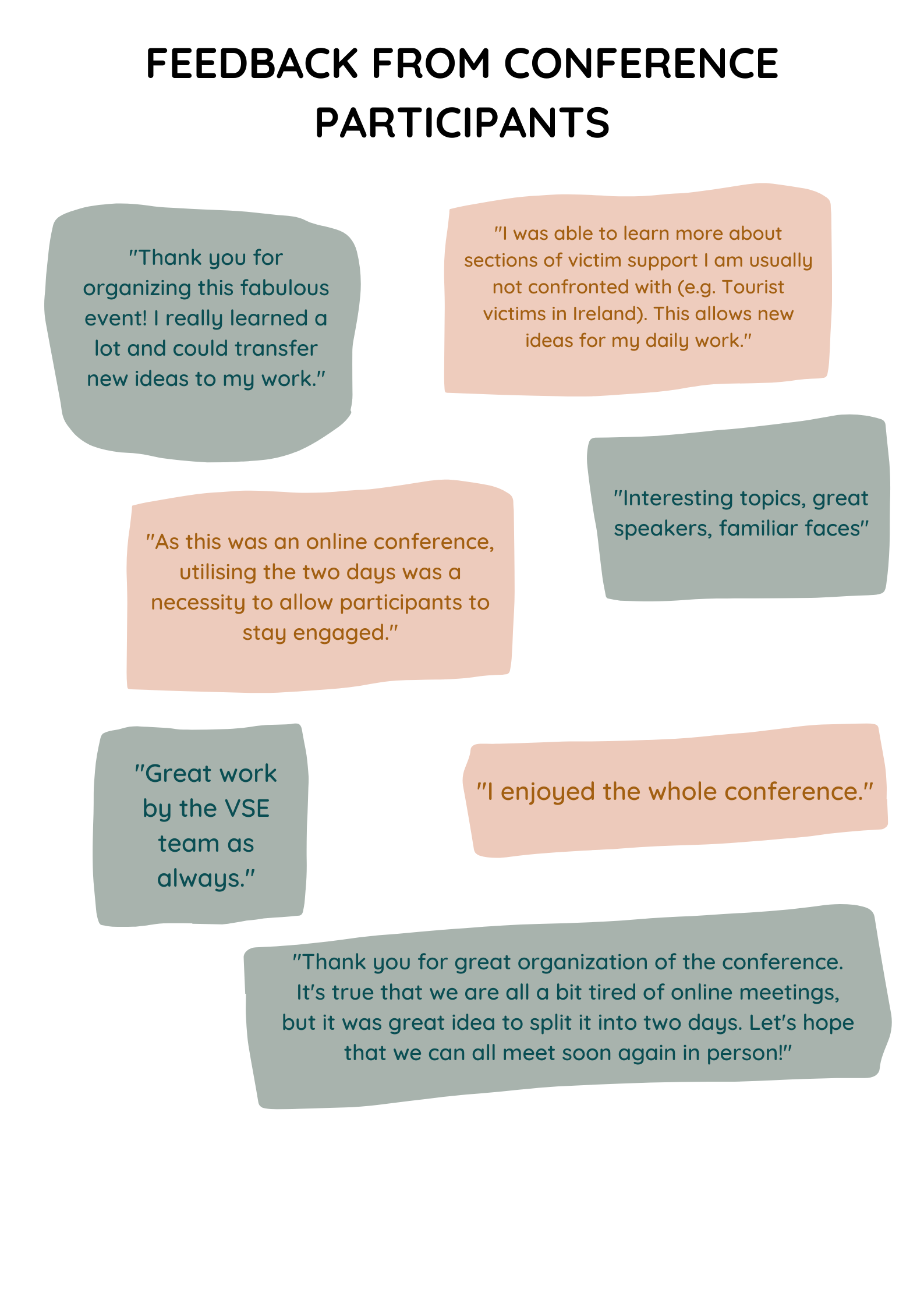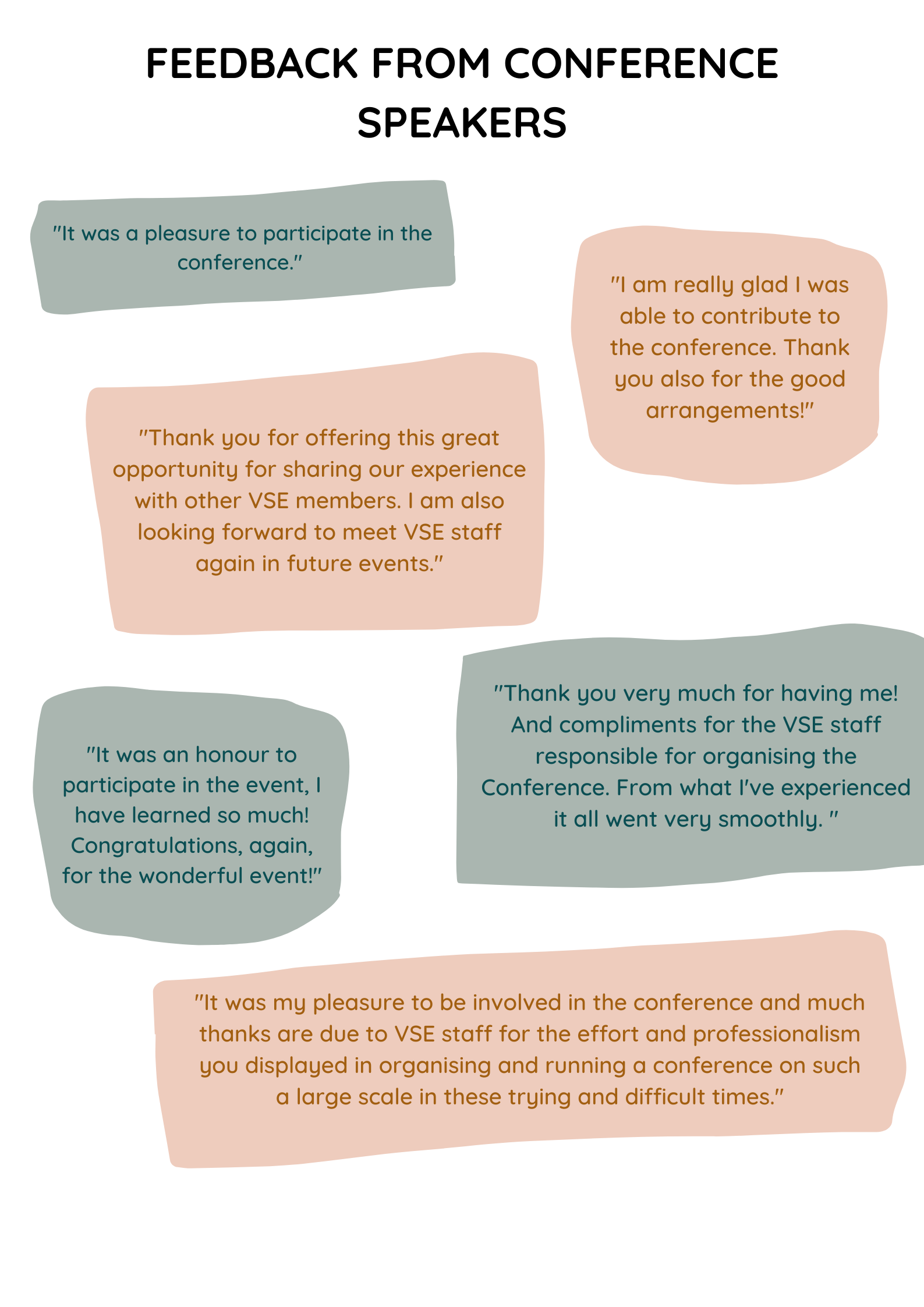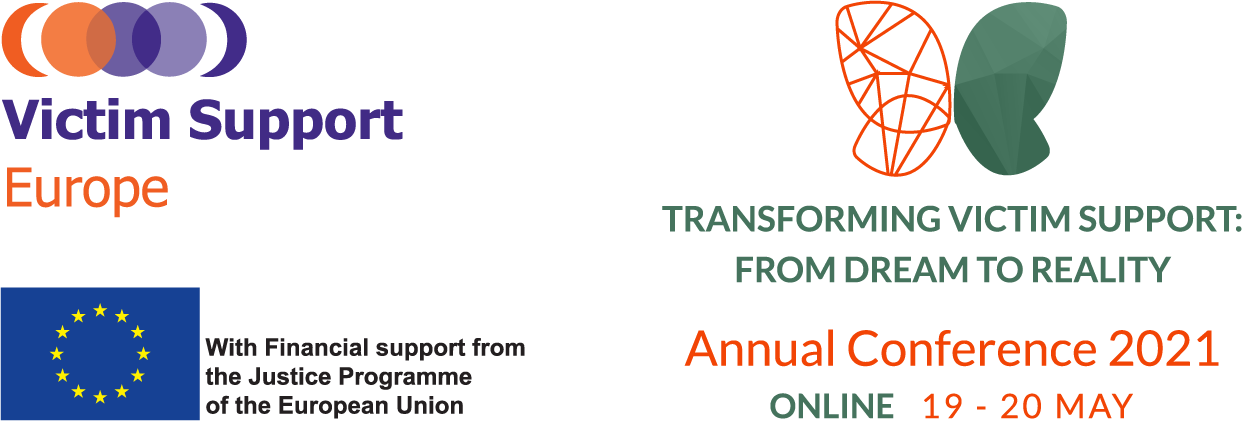This year, VSE’s annual conference took place on May 19th and 20th in a new format: spread over two days, with interactive networking sessions built into plenary sessions on both days, and with six simultaneous side events on the second day of the conference. The event was held on Zoom and had a registration fee of 10 euros, and all members had a right to attend free of charge for one participant.
With 90 registrations for the plenaries, 85 participants attended the plenary sessions. Average registration to attendance rate for webinars and similar online events stands at 40%¹, while this conference’s attendance rate stands at nearly 95%. Such a high rate could be explained by a) the fact that this year’s conference was heavily focused on VSE members who have a personal relationship with VSE and were thus more likely to attend and b) existence of a registration fee, which, while small, could have encouraged participants to attend.
Side events had lower attendance than the plenaries. Side event A, “Setting up and developing victim support services”, had 15 participants. Side event B, “Specific groups of victims”, had 10 participants. Side event C, “Supporting victims across sectors”, was attended by 8 people. Side event D, “Victims in an international context” had 12 participants. Side event E, “Communications in victim support sector”, was attended by 21 people. Finally, Side event D, “An Interactive Game on Victims’ Rights”, was attended by 10 people. These numbers are extracted from screenshots taken during the events (also held on Zoom) and therefore include the presenters and VSE staff who attended.
During and after the conference, participants were asked to fill out a short evaluation form to share their thoughts on the event. The survey received 8 responses, which is on the lower end of the normal range of 10-30% response rate for this type of surveys.²
Despite a relatively low number of responses, the survey provided plenty of valuable and consistent information. Overall, respondents reported high levels of satisfaction with the event. All respondents either agreed or strongly agreed with the statement “The conference was well organised”. Similarly, all respondents either agreed or strongly agreed with the statements “The content was interesting to me” and “The speakers were knowledgeable and presented professionally”. Responses on the statements related to the online platform (Zoom), time management, and the sufficiency of breaks were more mixed, with some neutral responses, but positive overall (see Figure 1).





